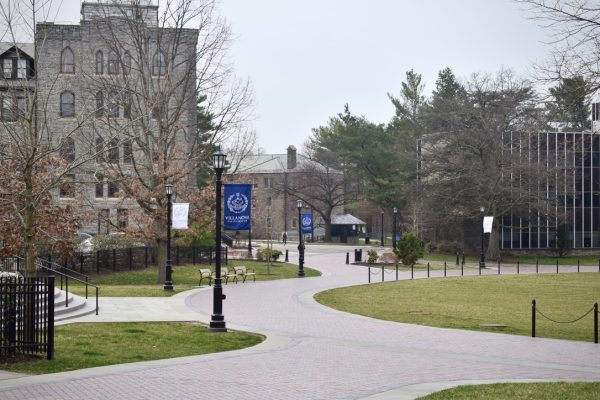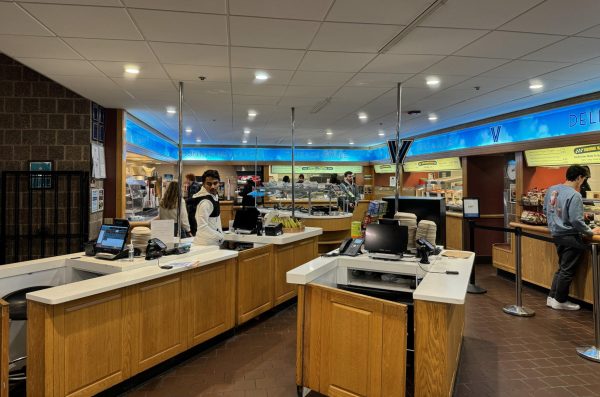With Alcaraz’s ascension, are we in a new era of professional men’s tennis?
September 21, 2022
One year ago, Carlos Alcaraz, a then 18-year-old Spaniard, made his US Open debut. He entered unseeded, so he had to play in qualifiers, and he made it to the quarter-finals, beating highly ranked players like Cam Norrie and Stefanos Tsitsipas. After the tournament, he soared from 55 to 38 in the ATP player rankings. By all accounts, he is a remarkable young player with much potential.
Just a few days ago, Alcaraz, now 19 years old, won the 2022 US Open Men’s Singles title. He entered the tournament as the third seed and beat highly ranked players Marin Čilić, Jannik Sinner, Francis Tiafoe and Casper Ruud on his way to the title. After his first Grand Slam win, he soared from four to the coveted number one spot on the ATP rankings.
Aside from young Alcaraz’s miraculous tournament run, the 2022 US Open was filled with surprises. Two of the semi-finalists were seeded over 20: Karen Khachanov and Francis Tiafoe, the latter of which beat Rafael Nadal, who has won a total of 22 Grand Slam titles (the most of any player ever) in the Round of 16 (the fourth round) of the tournament.
This absence of Nadal, Novak Djokovic and Roger Federer, who are widely considered to be the best men’s players currently active and are collectively known as the “Big Three,” has become more and more common in recent tournaments. Djokovic has not been able to play in the Australian or US Opens because of his unvaccinated status. Federer just announced his retirement from professional tennis, and Nadal is dealing with both age and unlucky injuries. According to GiveMeSport, the 2020 US Open was the first time in 16 years that none of the Big Three appeared in a Grand Slam semi-final.
Because of this top tier of elite players, the later stages of the biggest tournaments have been boring for some time. One of the Big Three making deep runs and winning has become commonplace. There have only been four unique winners of Wimbledon over the past two decades, and taking Andy Murray’s 2013 and 2016 wins away leaves the Big Three.
The US Open felt much more exciting this year and upsets were common. It felt as though anybody could make a deep run. It feels like what the women’s scene has been experiencing for years now, with Serena Williams’s fall from grace and recent retirement, with the rankings constantly in flux. I enjoy tuning into all of the Grand Slam tournaments, but I enjoy them even more when I cannot place a safe bet on who the winner might be, even if somebody my age winning one of them makes me feel like a failure.
So, what happens next? Is this state of the game the future or a fluke? Well, it’s hard to say.
The 40-year-old Federer just announced his retirement on Thursday, and unfortunately, as much as people may hope for him to pull a Michael Jordan and return at some point, the two consecutive knee surgeries do not instill great confidence. Even if he is medically in playing condition, he’s aged out of the game. His last appearance was at Wimbledon 2021, where he lost in a quarter-final match to now-tenth-ranked Hubert Hurkacz in straight-sets. The younger folks can just run circles around him.
Unless Djokovic gets the COVID-19 vaccine, his long stint as one of the top ranked players may be over. Because of his unvaccinated status, he is ineligible for two of the biggest tournaments of the year, the Australian Open (which he has a very good record at) and the US Open. The Serbian has been an out-spoken anti-vaxxer since it became widely available and mandated by the aforementioned tournaments, and unless he changes his tune, he will not be able to earn enough points every year to reach the highest ranks.
Nadal is the only Big Three challenger currently playing in full, and his age is starting to show. His raw skill and finesse still makes him a dangerous opponent and GOAT-contender, but he is not the player he was five years ago. It probably will not be long until he’s in Federer’s shoes.
While it will be sad to see these storied players go, I am glad their era is coming to a close. I am eager to see players such as Alcaraz, Tiafoe, Ruud, and my personal favorite, Tsitsipas, step further into the limelight. These players, and other highly ranked men like them, still possess elite levels of skill, but none are utterly dominant enough to own the Grand Slam scene like the Big Three have.
Soon, maybe my friends, colleagues and teammates will be able to vocally cheer on our favorite players without knowing in the back of our minds that their runs will inevitably end at the racquets of the long-reigning triumvirate.







